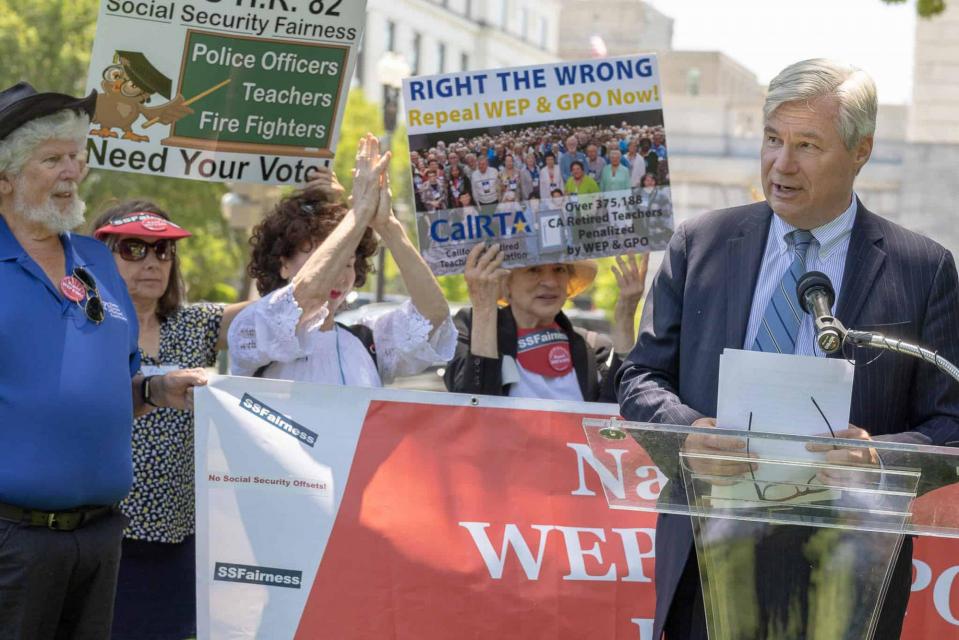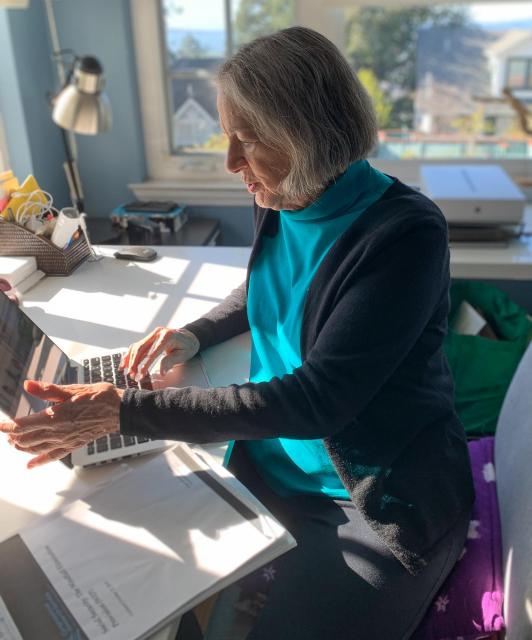Both CalSTRS and CalPERS have mechanisms in place to guard a retiree’s defined benefit pension against eroding purchasing power. The first is a cost-of-living adjustment, or COLA, and the second is a “floor” below which the buying power of a pension cannot fall. Now thanks to a CFT-sponsored bill recently signed by Governor Newsom, CalSTRS retirees from earlier decades will see additional relief.
First about COLAs. The COLAs are slightly different for the two systems and neither reflects the full rate of inflation in a given year. Instead both are capped at 2% regardless of the actual rate of inflation. As a result, the purchasing power of a retiree’s pension will erode over time.
However, the COLA for CalPERS pensions is compounding. It adds 2% in the first year. It then then adds 2% of the increased pension amount the next year, and 2% of the again increased pension amount the next year, and so on. As a result, the COLA for CalPERS retirees becomes larger over time.
The COLA for CalSTRS retirees is not compounding. It adds a fixed 2% of the member’s original pension benefit each subsequent year. This means the buying power of a CalSTRS pension erodes faster than a CalPERS pension.
Now about floors. The floor below which the buying power of the pension benefit cannot fall has different names in each system. For CalSTRS, it is called the Supplemental Benefit Maintenance Account, or SBMA. For CalPERS, it’s called the Purchasing Power Protection Allowance, or PPPA.
For CalSTRS retirees, the SBMA floor was 85% until recently. Once an original pension benefit lost 15% of its purchasing power, CalSTRS would issue a separate check to the retiree, in addition to their regular defined benefit pension check. This supplemental amount makes up the difference between the regular pension and the 85% purchasing power floor.
This SBMA payment ensures that the purchasing power of a CalSTRS retiree’s overall pension benefit does not fall below 85% of its original buying power. Also, the SBMA payment is not capped at 2% — it increases at the actual rate of inflation for the previous year.
For CalPERS retirees, the PPPA functions the same, except the purchasing power floor of the pension benefit is 75% rather than 85%. Once the purchasing power of the original pension erodes to 75%, CalPERS issues a separate PPPA check to make up the difference between the regular pension amount and the 75% purchasing power floor. So even though a CalPERS pension benefit erodes more slowly than a CalSTRS pension benefit, it can erode to a lower guaranteed purchasing power.
The high inflation rate in 2022 will push the purchasing power of CalSTRS pensions down to the 85% floor for about 50,000 retirees. As a result, these retirees will receive a second check from CalSTRS — the SBMA as described above — starting in October. SBMA benefits are paid quarterly, in the same manner as the regular benefit. For example, if the regular benefit is a direct deposit, the SBMA will also be a direct deposit. CalSTRS members don’t need to do anything to initiate their SBMA benefit.
In a significant legislative win this year, CFT-sponsored AB 868, which was supported by CalSTRS, changed the floor for members who retired prior to 1999. Prior to then, CalPERS pension benefits were significantly more generous than CalSTRS benefits. In 1999, the CalSTRS pension benefit formula was changed to make CalSTRS benefits almost as generous as CalPERS.
However, this new CalSTRS formula was not retroactively applied to pre-1999 retirees. The pensions of these retirees were so low that the 85% floor allowed the incomes of some to fall well below the poverty line.
AB 868 (Cortese, D-San Jose) addressed this problem by raising the purchasing power floor for those who retired during the 1970s to 100%, those who retired in the 1980s to 95%, and those who retired in the 1990s to 90% of their original purchasing power. These changes will take effect in the 2023-24 fiscal year and these retirees will likely see three checks:
- their original pension benefit,
- their ongoing SBMA check, and
- a check reflecting the new floor as a result of AB 868.
For CalPERS pensions, no change was made to the PPPA floor because there was no significant change in the benefit pre- and post-1999. However, the high inflation in 2022 will lead to many CalPERS retirees receiving a PPPA check for the first time, an adjustment CalPERS makes in May of each year.
— By Doug Orr, Chair of the CFT Retirement Policy
Committee, and a member of the San Francisco Community
College Federation of Teachers Retiree Chapter, Local 2121-R



